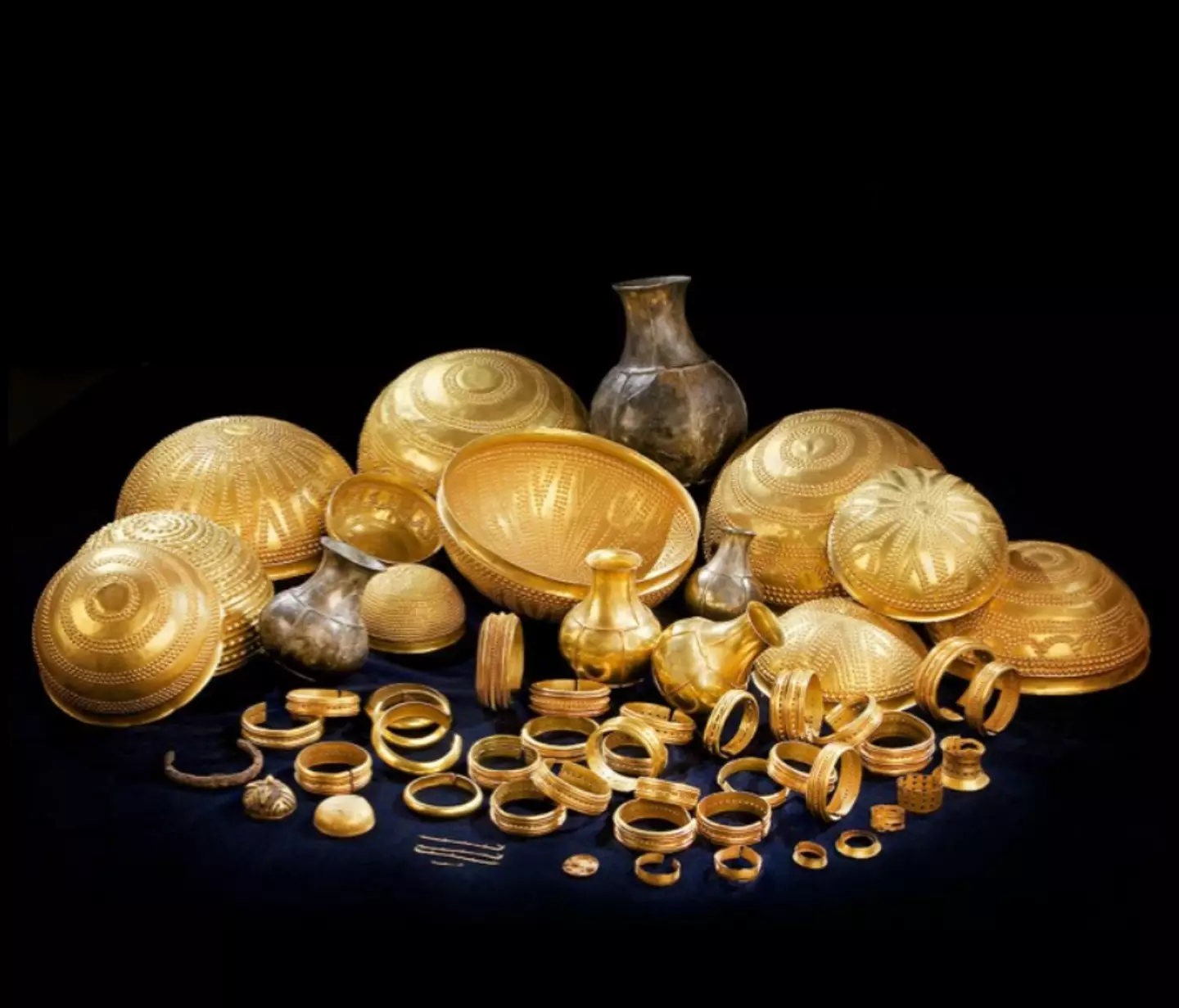Being lucky enough to come across a treasure trove is one thing, but also being able to distinguish what could actually be valuable is another.
When it comes to ancient treasures and discoveries, looks can certainly be deceiving.
A 1963 find of treasures from the Iberian Bronze Age certainly does catch the eye with all of its gold, however, two of its most corroded objects might be the most precious of all.
The two items are a dull bracelet and rusted hollow hemisphere decorated with a bit of gold are made up of interesting metals. The hemisphere object is believed to be part of a larger scepter.
The treasure of Villena is made up of 66 objects, which include golden, silver, and amber items.
As far as researchers can make out, they are not made from any metals found on Earth.
Both of these objects are particularly hard to date, sparking intense debate within the community.

The treasure of Villena is made up of 66 objects which include golden, silver, and amber items. (Villena Museum)
Salvador Rovira-Llorens, the now-retired head of conservation at the National Archeological Museum Spain, led the investigation into these items.
Researchers now believe that the metal that they are made from is actually iron from meteorites in space, not found on Earth.
There is a way to tell the difference: iron from meteorites has a much higher nickel content than iron dug out of Earth’s ground.
The possibility of the two items being made from this type of iron would help explain how they fit in with the rest of the collection – they were made around the same period, dating back to around 1400 to 1200 BCE.
“The presence in the Villena Treasure (Alicante) of two pieces of iron, a hollow semisphere and an open bracelet or ring, has generated controversy around its chronology since its discovery in 1963,” researchers said in the journal Trabajos de Prehistoria.
“Data from new analyzes are presented, the results of which support in favor of both pieces being made of meteoritic iron, implying the possibility of locating their chronology at some point in the Late Bronze Age prior to the beginning of the production of terrestrial iron,” the researchers wrote.

Salvador Rovira-Llorens, the now-retired head of conservation at the National Archeological Museum Spain, led the investigation into these items. (Villena Museum)
“The available data suggest that the cap and bracelet from the Treasure of Villena would currently be the first two pieces attributable to meteoritic iron in the Iberian Peninsula which is compatible with a Late Bronze chronology, prior to the beginning of the widespread production of terrestrial iron.”
Scientists are hoping greater research into the treasure will help uncover more about the treasure and when and how it was formed.
The Villena’s Archaeological Museum in Spain where the treasure is kept describes the discovery as one of the ‘most important prehistoric treasures in Europe’.
So, yeah, kind of a big deal.
Featured Image Credit: Sciencealert.com/Municipal Archaeological Museum of Villena/Villena Museum

